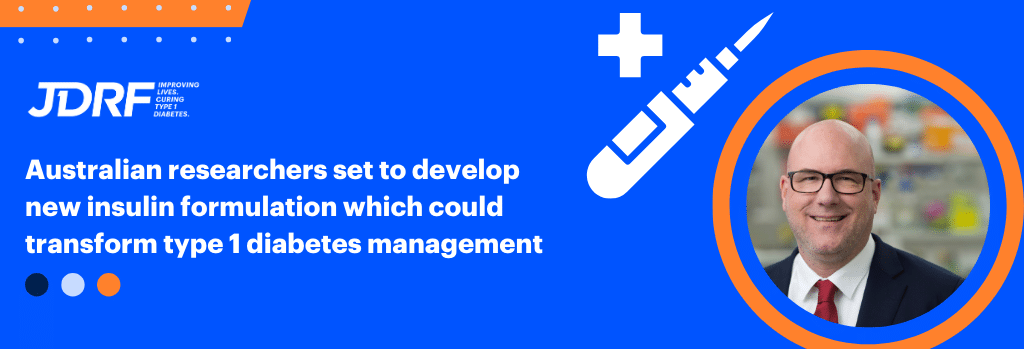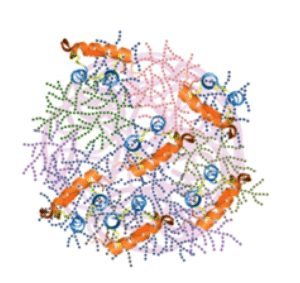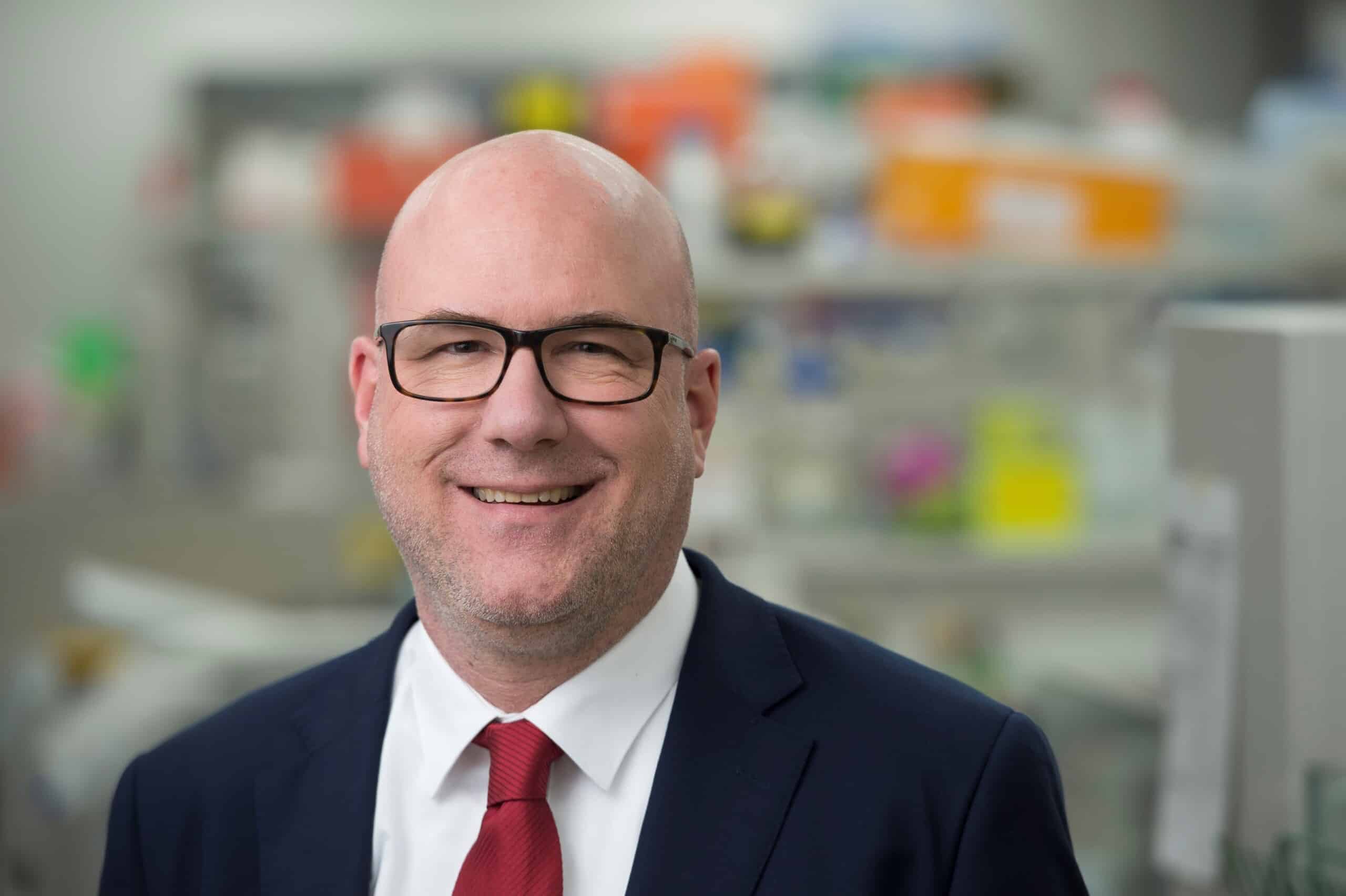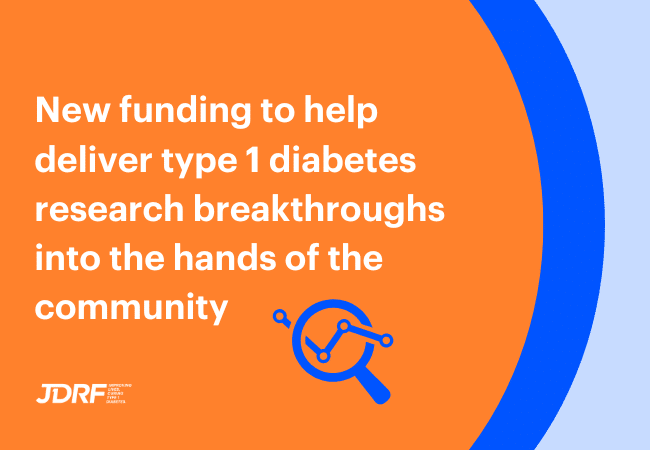Australian researchers set to develop new insulin formulation which could transform type 1 diabetes management

Australian researcher Professor Christoph Hagemeyer from Monash University and colleagues have received over $750,000 to take their innovative new insulin formulation to the next stage of research.
In people with type 1 diabetes (T1D), the immune system incorrectly attacks the cells of the pancreas that normally produce insulin, a hormone essential to regulate blood sugar levels. This means that people with T1D need to inject or use man-made insulin to survive. And while insulin is a lifesaver, current formulations are far from simple to use, making blood sugar management complex and burdensome.
That’s why JDRF is investing in research projects developing new generation insulins which act faster or more precisely, relieving some of the burden of managing T1D and reducing the risk of long-term complications.
A novel insulin formulation which mimics the action of the pancreas
The Type 1 Diabetes Grand Challenge, a partnership between JDRF UK, Diabetes UK and Steve Morgan Foundation, has funded a project led by Prof Hagemeyer and his collaborators to accelerate the development of a new insulin formulation that aims to closely mimic how a healthy pancreas works. JDRF Australia has recently funded Dr Rong Xu, an early-career researcher from Prof Hagemeyer’s team, to bring essential expertise that will enable this work to progress.
In people without T1D, the pancreas detects rises in blood sugar levels and then releases insulin to bring blood sugar levels down. Conversely, when blood sugar levels decrease, insulin release is stopped to avoid blood sugars getting too low. This interplay is difficult to replicate in people with T1D where they (or a pump) must take on the role of the pancreas, increasing or decreasing insulin levels in response to changing blood sugar levels.
The new insulin formulation being developed by Prof Hagemeyer and his colleagues is known as a “glucose responsive insulin” or “smart insulin” delivery system. The idea behind these new insulin formulations is that after being injected into the body, they release insulin only when glucose levels are above a certain point and conversely become inactive when blood glucose levels fall below a certain point. In this way, they keep blood glucose levels within a safe range, avoiding excessively high blood glucose (hyperglycaemia) and excessively low blood sugar levels (hypoglycaemia).

The insulin formulation from Prof Hagemeyer’s team is a new insulin delivery system which responds in real-time to blood glucose levels.
Individual insulin molecules are coloured orange. Credit: BioRender
What is the glucose responsive insulin being investigated?
In preclinical models, Prof Hagemeyer and his collaborators showed that this insulin formulation responds well to changes in blood glucose levels and reduces the number of dangerous hypoglycaemic events. The dosage was also shown to remain active over a three-day period, markedly extending the action of current insulin formulations.
The new funding will propel this innovative insulin to the next stage of research, allowing Prof Hagemeyer and his colleagues to move forward with manufacturing and more extensive testing of the formulation. Successful results will bring this new technology closer to the hands of people with T1D.
What does this mean for someone with T1D?
Insulin is currently the only approved treatment for the management of T1D. However, insulin use through multiple daily injections or pump use remains complex and burdensome. The insulin formulation developed and currently being tested by Prof Hagemeyer and his collaborators holds great promise. The funded project is a long-standing collaboration with other teams including Prof Frank Caruso (The University of Melbourne) and A/Prof Francesca Cavalieri (RMIT), as well as Dr Rong Xu, Prof Michael Cowley and Prof Mark Cooper at Monash University. Together, they have been working to find a cure for T1D for nearly a decade.
For people living with T1D, this could mean a future where insulin therapy is less complex and more precise, reducing the daily burden of managing the condition and improving overall quality of life.
People with Type 1 diabetes face daily challenges managing blood glucose levels. To revolutionise treatment, we’ve developed an innovative, biodegradable artificial pancreas system from sweet corn-derived nanosugar. This breakthrough material delivers insulin in response to glucose levels, maintaining normalcy for hours. With generous support from JDRF and in close collaboration with the University of Melbourne and RMIT, we are excited to scale up production of this unique nanomaterial and advance toward clinical translation to benefit people with Type 1 diabetes.
Prof Christoph Hagemeyer, Monash University

Professor Christoph Hagemeyer. Monash University
JDRF’s role in driving research into new types of insulin
JDRF’s vision is a world without T1D. But our mission includes being able to improve the lives of people currently living with the condition while at the same time pursuing cures for T1D.
This is why JDRF invests in its Improving Lives Program which is funding researchers who are developing drugs, devices, behavioural health interventions, and combinations of these therapies to improve outcomes and quality of life for people with T1D. This includes investment into new forms of insulins.
Our research portfolio
Groundbreaking projects like these are only possible with support from our community. The future of 130,000 Australians living with T1D and the 8 more diagnosed each day depends on it.
To get involved, donate here.
Explore all research projects that JDRF Australia funds.




